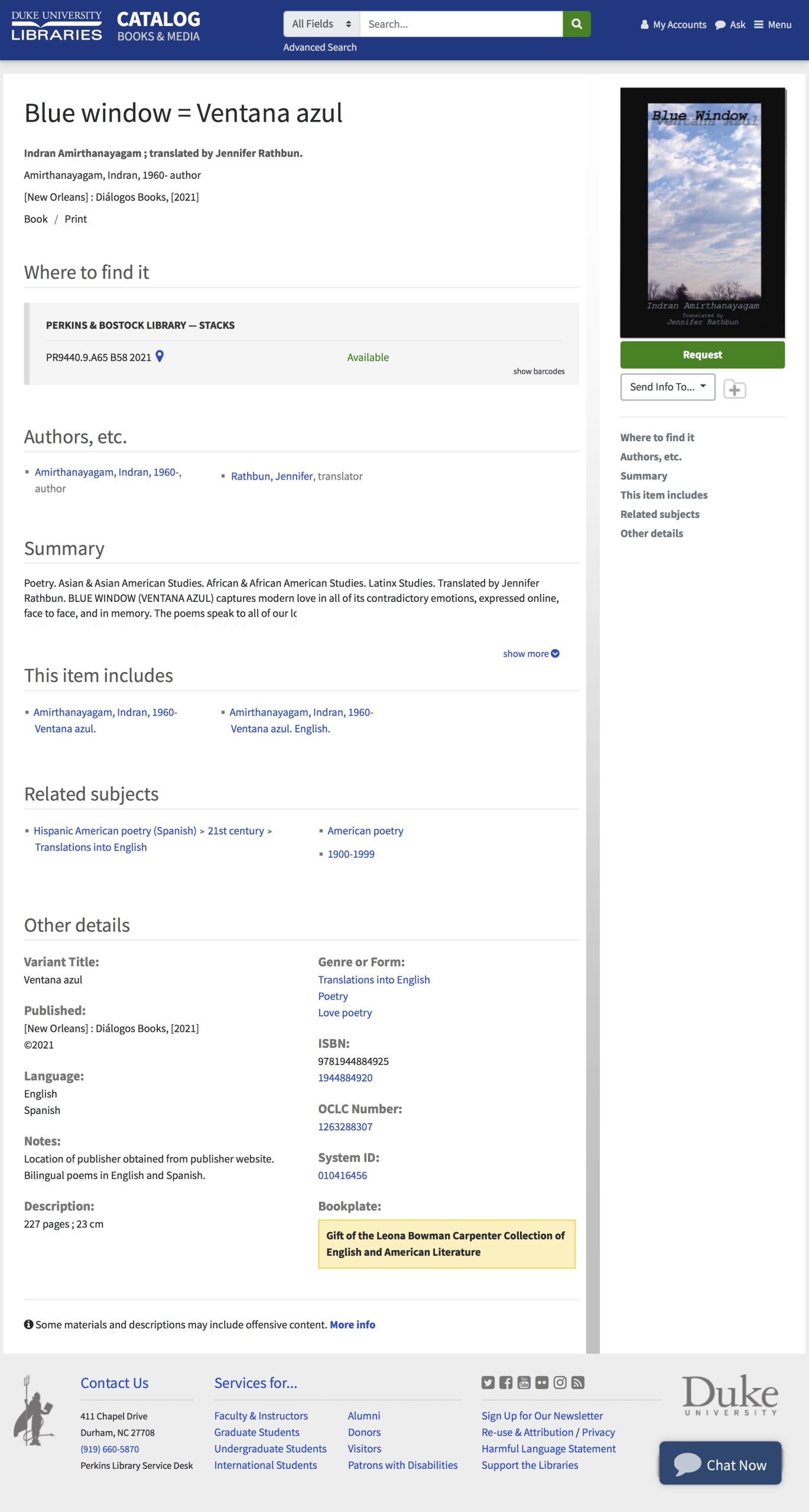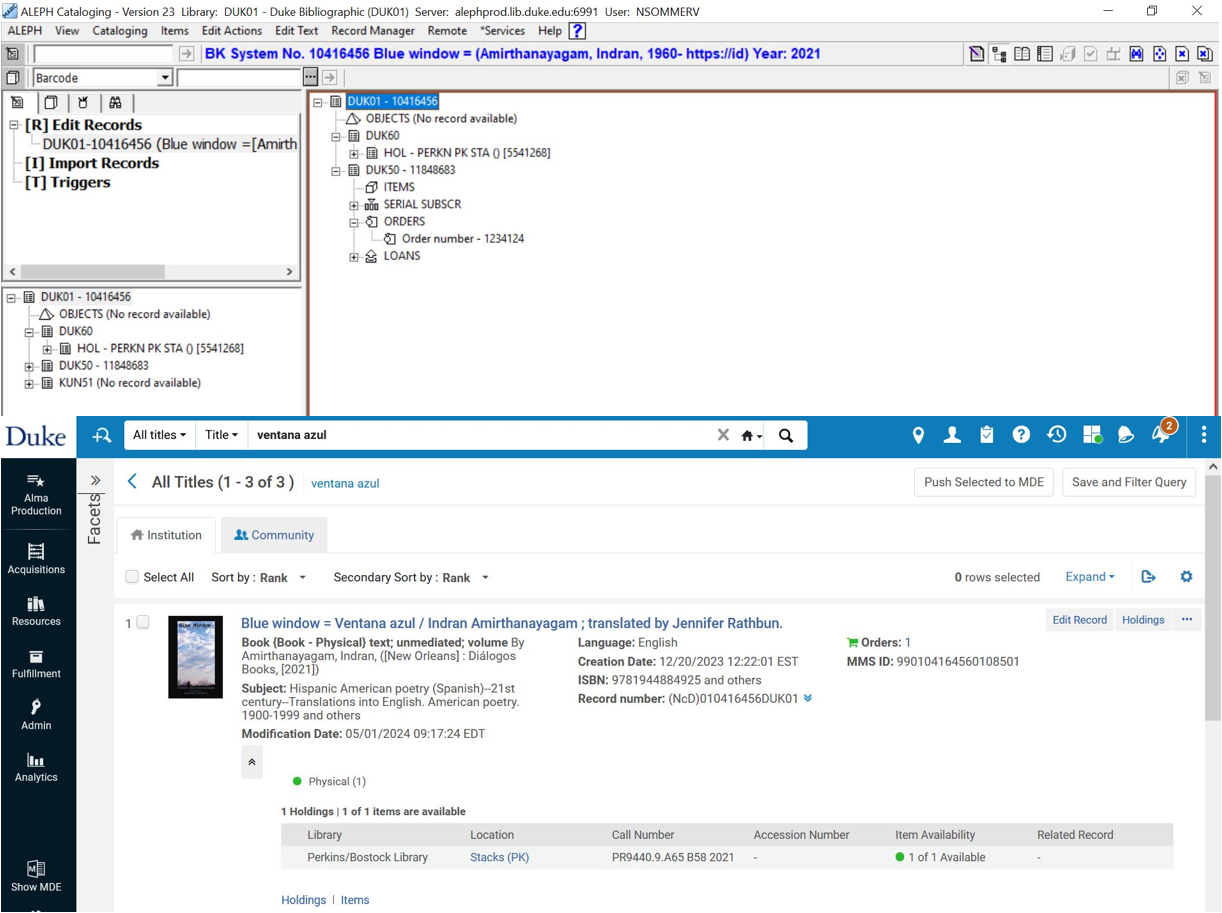
The library catalog, article finders, online journal and database tools, bento search results, library accounts—these tools all provide a way for library users to discover and obtain the constellation of resources available to them at Duke and beyond. But did you know that these tools also provide a window into a complex system that underpins selection, purchase, description, maintenance, and circulation of library resources?
 For twenty years, the libraries at Duke University have used Ex Libris’s Aleph integrated library system to manage library resources in a variety of formats and languages across the acquisitions, description, inventory, and delivery lifecycles. This requires the system to store, interpret, correlate, ingest, and output a variety of data types. Aleph has helped the libraries at Duke successfully steward existing resources and acquire upwards of 1 million new resources since 2004, including a proliferation of eBooks, eJournals, databases and streaming media. On July 10th, we will be sunsetting Aleph and implementing Ex Libris’s Alma system. Alma builds on the functionality and data models of an integrated library system and incorporates these into a library services platform that streamlines and aligns processes for selecting, acquiring, describing and delivering print and electronic resources. Much planning, careful data mapping and cleanup, and lots of collaboration among subject matter experts from across the libraries at Duke has brought us to the cusp of going live with Alma. Stay tuned for a follow-up post in the later part of July in which members of the Duke University Libraries Collections Services division will reflect on the work that led up to go-live and talk about the early days of working in Alma.
For twenty years, the libraries at Duke University have used Ex Libris’s Aleph integrated library system to manage library resources in a variety of formats and languages across the acquisitions, description, inventory, and delivery lifecycles. This requires the system to store, interpret, correlate, ingest, and output a variety of data types. Aleph has helped the libraries at Duke successfully steward existing resources and acquire upwards of 1 million new resources since 2004, including a proliferation of eBooks, eJournals, databases and streaming media. On July 10th, we will be sunsetting Aleph and implementing Ex Libris’s Alma system. Alma builds on the functionality and data models of an integrated library system and incorporates these into a library services platform that streamlines and aligns processes for selecting, acquiring, describing and delivering print and electronic resources. Much planning, careful data mapping and cleanup, and lots of collaboration among subject matter experts from across the libraries at Duke has brought us to the cusp of going live with Alma. Stay tuned for a follow-up post in the later part of July in which members of the Duke University Libraries Collections Services division will reflect on the work that led up to go-live and talk about the early days of working in Alma.

